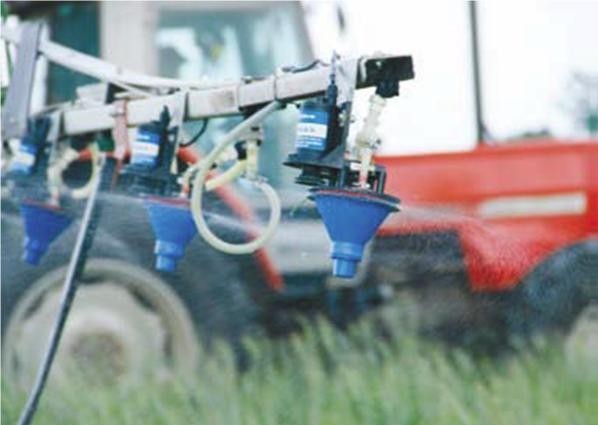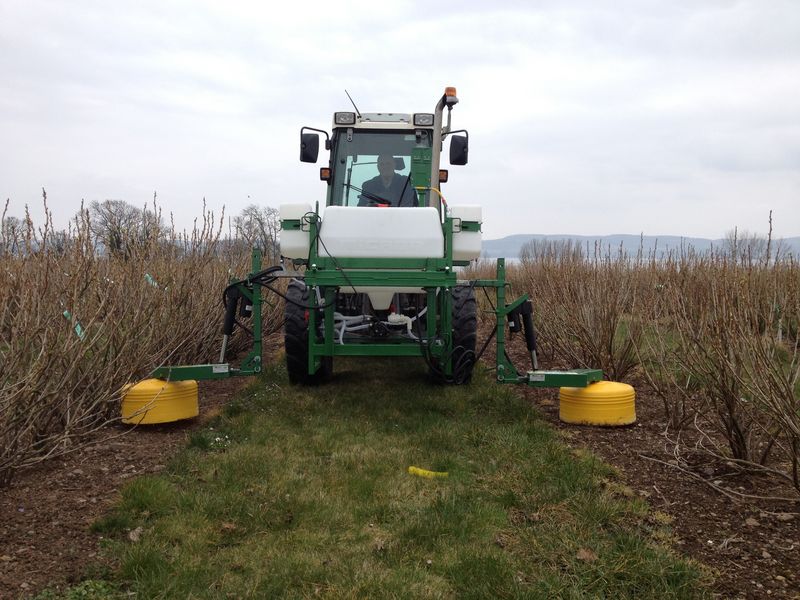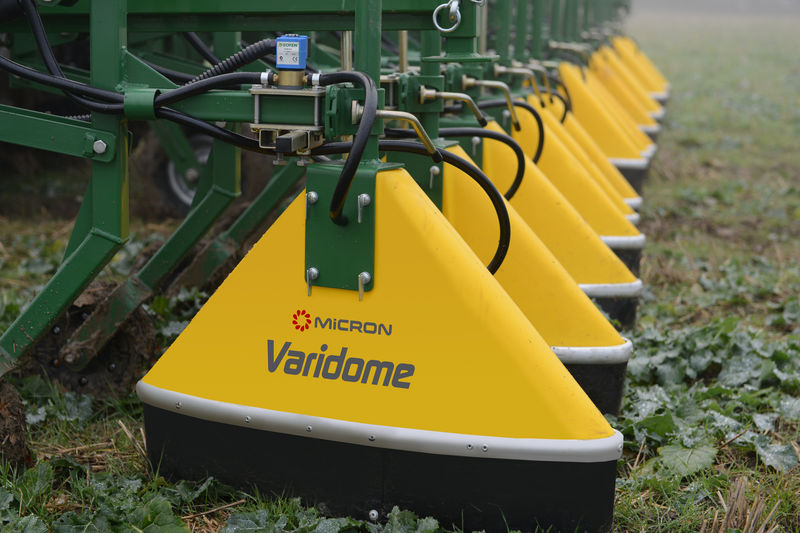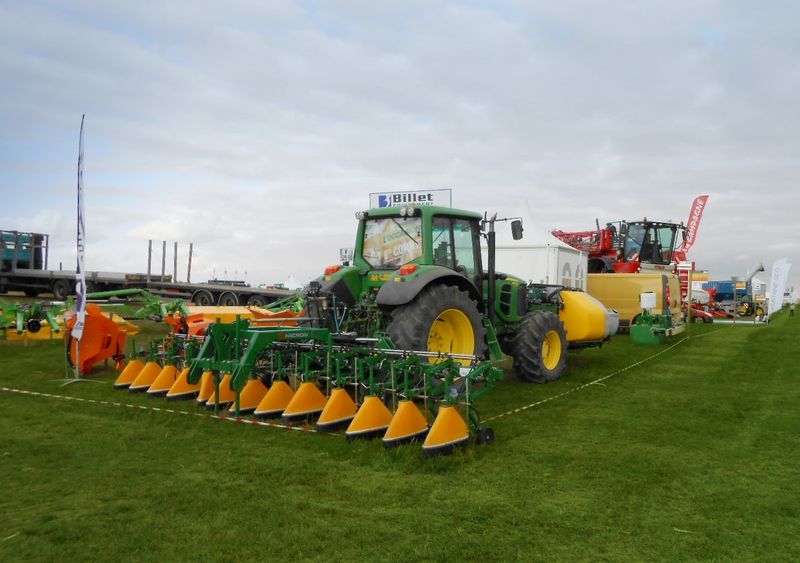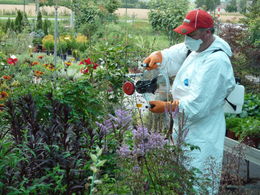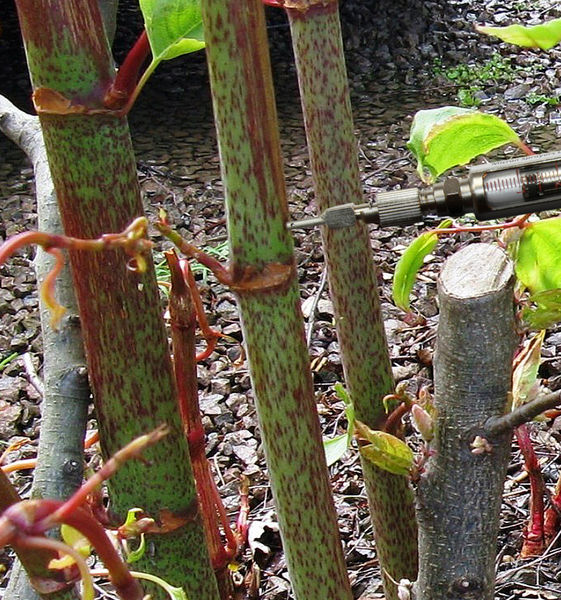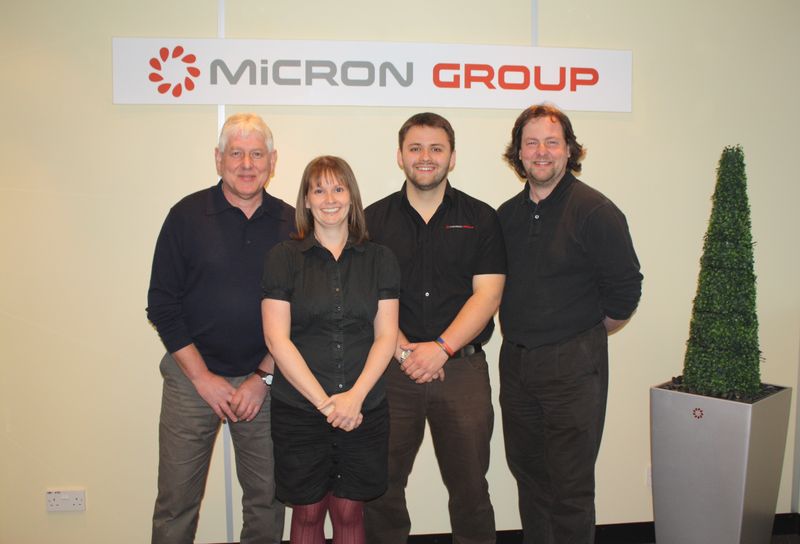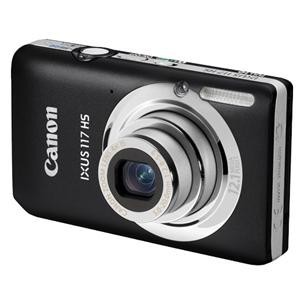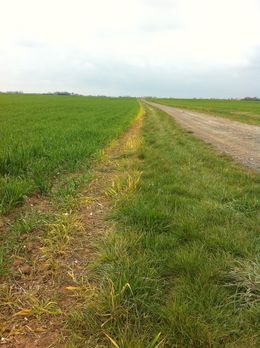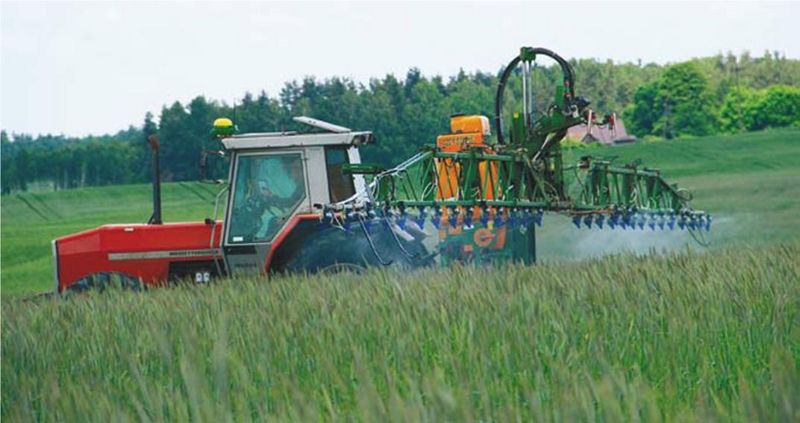
by Krzysztof Grzeszczyk, Agrotechnika 8/2013
Could you use only 30 liters per hectare and be satisfied with protection results? It seems that you can. A farm in Lubawa (Warmińsko-mazurskie district) started using a new method of crop protection in spring 2013.
The first of its kind in Poland, I had a chance to see the classical Amazone UF1801 (30 meter boom) converted into a CDA sprayer. The conversion was carried out by Eryk Cieślak who has dealt with these English make spinning disc atomisers produced by Micron Sprayers for many years now. Eryk sells hand-held, backpack, stationary, aerial and vehicle-mounted atomisers for agriculture and other purposes.
“The boom is fitted with CDA atomisers rather than conventional hydraulic nozzles. Their spinning discs produce small, evenly sized droplets of liquid. Feeding pump works at 1,5-2 bar pressure, distributing the spraying mixture over the boom to the orifice plates. This gives us the precise amount of liquid for each atomiser; the liquid travels to the spinning disc by gravity”, explains Eryk Cieślak.
Depending on the rotation speed, the atomiser may produce three different droplet sizes: 250-300 microns for herbicide, 150 microns for fungicide, and 70-100 microns for insecticide spraying. We may change the speed by choosing one of the three positions on an atomiser’s simple belt drive (2000 rev./min, 3000 rev./min or 5000 rev./min). The atomisers are mounted on a boom at 1 m spacing and 20 degree angle (which offers much better crop penetration). They are powered by a 12v DC tractor battery.
“The point of CDA spraying is the sufficient coverage of plants with spraying mixture, with as low a volume as possible. To ensure effective protection, we need to get a certain amount of spray droplets per square centimeter of crop. We can achieve this by using spinning disc atomisers and reduce the amount of both water and chemical” – emphasizes Eryk Cieślak.
Not every sprayer’s boom is suitable for CDA atomisers. In this case the Amazone construction was chosen, which proved to be perfect for such use. Its broad bar provides good protection for atomisers when folding and unfolding the boom, also the levelling system works brilliantly. Moreover, the Amazone spraying computer can work with low volume spraying (20-30 l/ha). In this case the boom was divided into 6 sections, operated via radio remote control from the control box, also fitted to the sprayer. All operations (mounting the atomisers, redesigning the fluid system of the sprayer, mounting the electrical installations) took 4 days of work. In some cases, the alternator of the tractor has to be replaced with a bigger one, to fulfill the electrical demand of the system. The total cost of conversion of the sprayer was about 30 000 PLN (the cost of single atomiser is 750 PLN).
Working with CDA equipment is a bit more demanding than with a traditional sprayer. It has to be operated more carefully and needs better aftercare. However, when used on a big farm, it may as much as half the costs of crop protection. Farmers who are planning to acquire a new, self-propelled, highly efficient traditional sprayer, may want to consider converting their existing sprayer into a CDA system instead to achieve the very same economical result at much lower cost.
Experiences with the new method of protection
The first boom sprayer fitted with atomisers has been working in a 1000 hectare seeding producing farm owned by Arkadiusz Karbowski since spring 2013. The crops produced are mainly wheat, triticale and charlock. We have asked Igor Kołodziejczak, supervisor of the farm, about his opinion about the CDA solution:
“Our experiments with CDA atomisers have started almost 10 year ago, with the hand-held sprayers, producing 2.4 m spray pattern. Light, robust sprayers powered with D-cell batteries were used in places hard to access with a tractor. They consumed very low amounts of water and chemical. The positive results had using these sprayers convinced us to try CDA on a boom sprayer”, says Igor.
What were the results of CDA spraying? Are there any restrictions?
“When conducting the spray, the wind force has to be taken into consideration – it definitely affects the spray more than when using a conventional method. However, we usually carry out the work on early mornings and late afternoons when there is no wind. When spraying with only 30 liters per hectare, dew is not a problem, it is even desirable. After first season we are very satisfied with the results of CDA spraying. All chemicals used on our farm worked properly. I’m sure that the CDA sprayer is providing the crops the same protection as the conventional one. What is more, we have reduced the amounts of chemicals used – in some cases by a half. This significantly reduces crop protection cost and increases our crop production profit.”
Photo Captions
1. 1800 litre tank is enough to spray 60 hectares of crops. The working speed is between 5-8 km/h.
2. Atomisers produce small even droplets of liquid. The spinning disc is driven by a electric motor via belt transmission.
